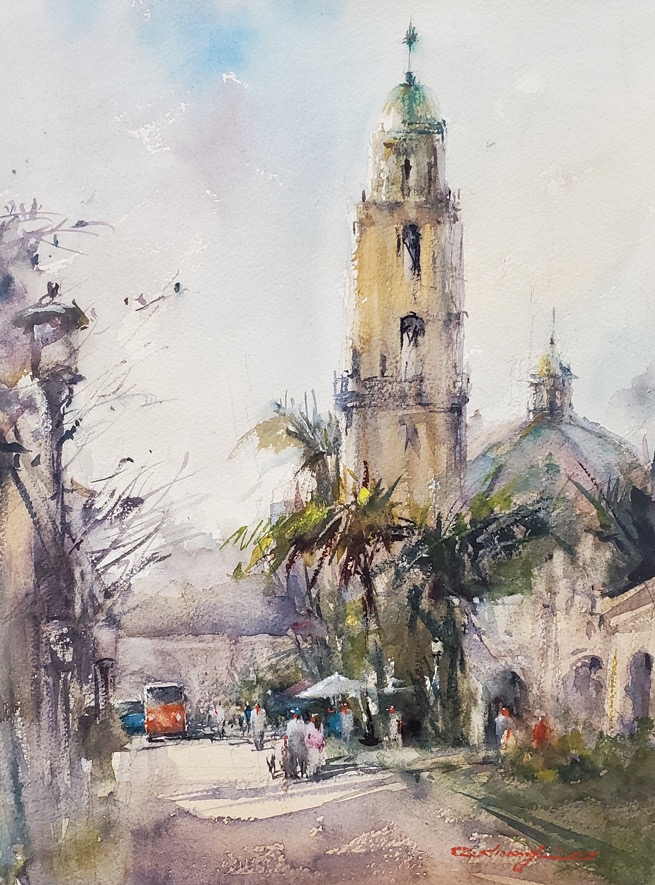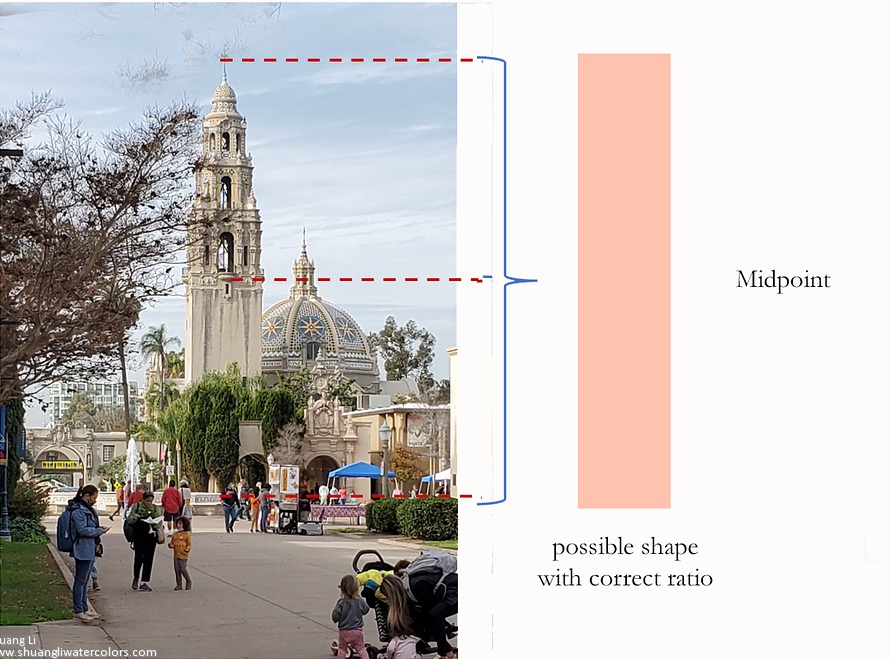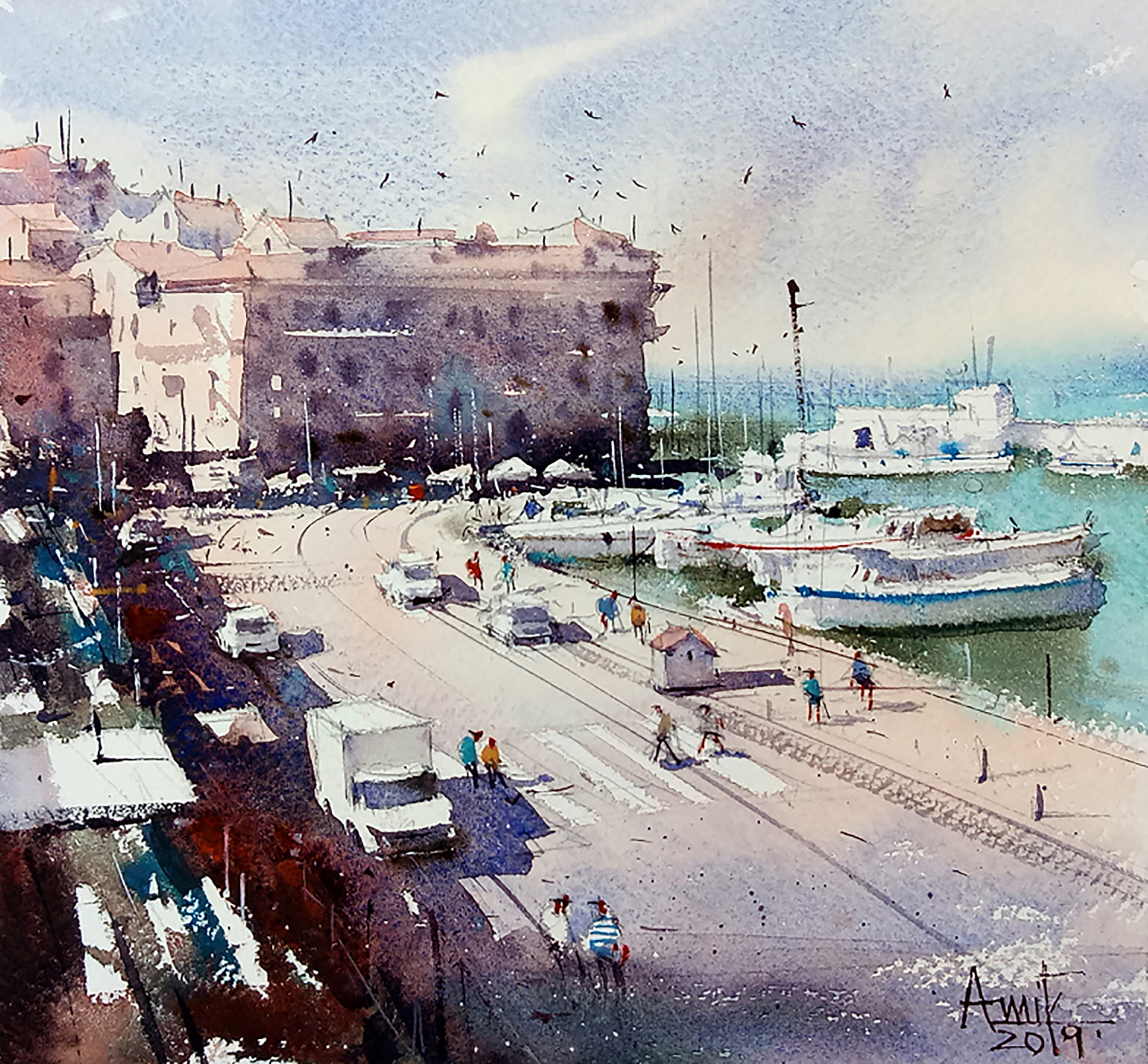“A lot of artists like to paint structures such as buildings, especially if they live in or near a city, and like to paint outdoors,” says Shuang Li. “A common question arises during my plein air workshops, ‘Why don’t my buildings look like the ones in front of me?’ Today I am going to share some tips that may ease your frustrations.”

Are You Proportional?
“Sighting (or sometimes referred to as drawing with sighting) helps an artist to draw or paint subjects in proper proportions and translate the 3-dimensional world onto a 2-dimensional surface with accuracy and confidence.
“In the sighting technique, there are two simple but important things that can immediately reduce your struggle when you paint buildings (or actually, help you paint anything, believe it or not):
1. Finding the whole and midpoint
2. Using comparative ratio for proportions
“To see how this works in reality, let’s use the actual location of my painting El Prado Afternoon — a street scene leading to the historic Museum building in Balboa Park, San Diego California.”
Find the Whole and Midpoint
“When you try to paint a building, you can’t physically measure the building with a ruler, but you can roughly “measure” the building with a simple sighting. To start, think of this building as a flat shape, then divide it by finding the TOP, the BOTTOM, and more importantly, the MIDPOINT (see the illustration below). The top half should fit at about half space where you intend to position your building on your paper, and the lower half should fit into the other 50 percent of the whole. If any half doesn’t fit on your paper, check these three points again on the building and correct the one on the paper.

“Once you are done with this, move to the next step.”
Use Comparative Ratio for Proportions
“This again is very simple to do: just look at the building you are trying to paint and compare its WIDTH with its HEIGHT for a rough proportional ratio, then do the same on your drawing or painting and see if you have a similar ratio in your artwork.
“The RATIO here is a RELATIONSHIP between height and width. It will help to establish the proper proportions of the shape. The shape you draw or paint on paper should have the same (or at least a very close) ratio as the real building in front of you. If not, do the sighting again. Carefully observe and compare both ratios one more time, then you should immediately know what to correct in your painting or drawing.

“This comparative ratio for proportions can be used everywhere in a painting, not only within or among buildings and structures, but with all other visual shapes of a painting.
“Now, when you ask: ‘Why does my building not look like the ones in front of me?’ you’ll have the above tools to help you find answers. Sighting is such a powerful technique that every artist should master it and use it when painting representational paintings. In painting watercolor, especially when painting outdoors, the sighting technique is crucial from the initial drawing till the last brushstroke or detail of a painting.”

Master artist Amit Kapoor reveals simple techniques to easily tackle intimidating scenes to create jaw-dropping artwork in just 3 hours in “Composition for Watercolor.”







